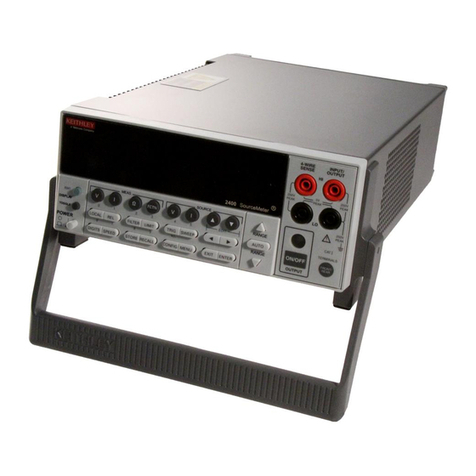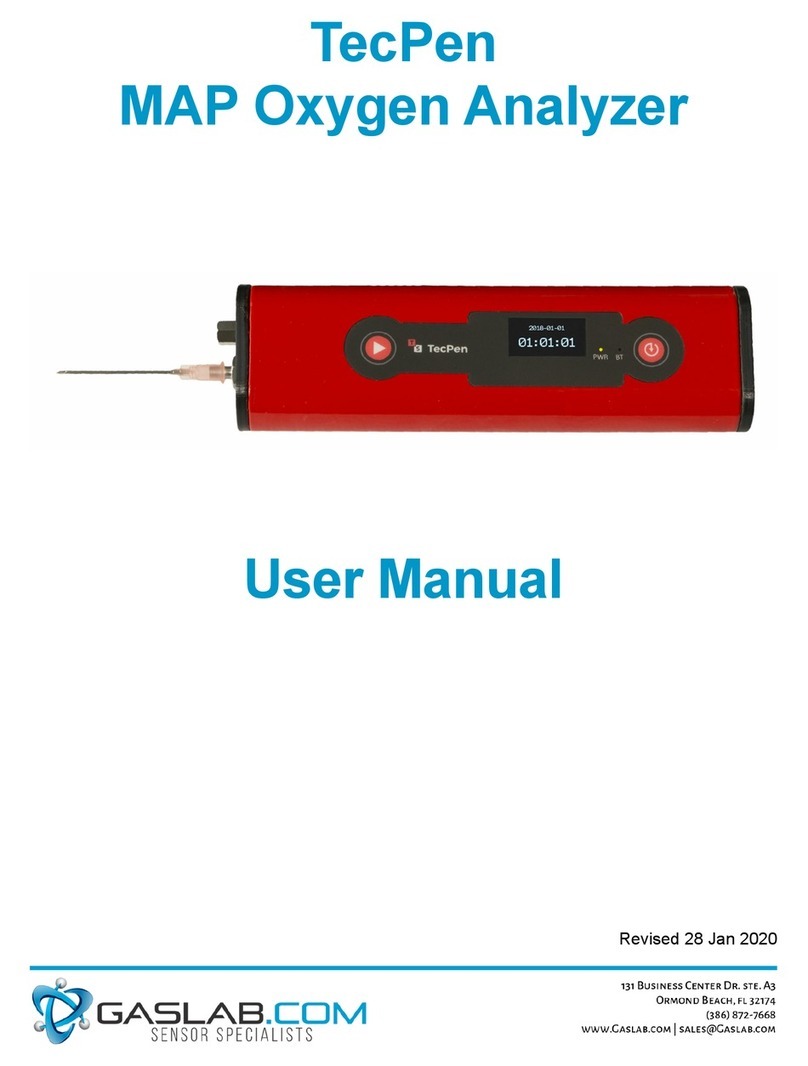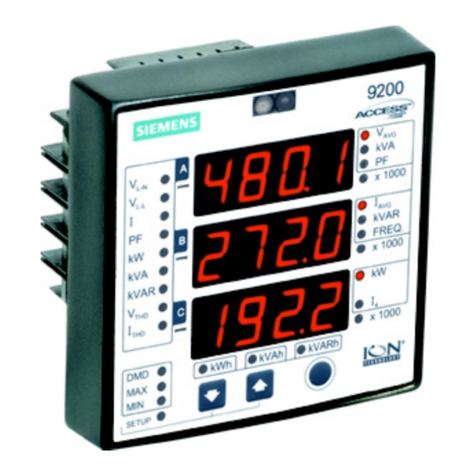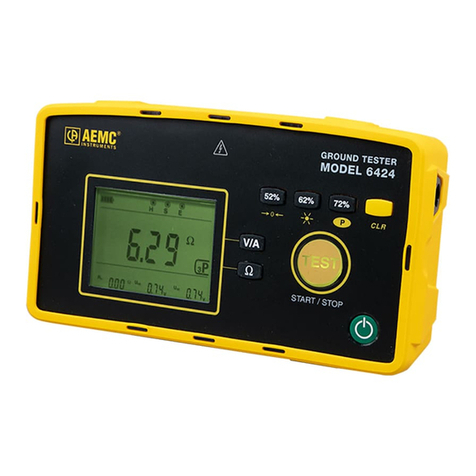shelyak UVEX PF0079 User manual

2

3
Tables of contents
TABLES OF CONTENTS ....................................................................................................................................................................3
INTRODUCTION..............................................................................................................................................................................4
1PRESENTATION OF THE UVEX.................................................................................................................................................5
1.1 OUT OF THE BOX ........................................................................................................................................................................5
1.2 OVERVIEW OF THE UVEX.............................................................................................................................................................5
1.3 OPTICAL ARCHITECTURE ..............................................................................................................................................................6
1.4 STEPS FOR STARTING WITH THE UVEX ...........................................................................................................................................6
2INSTALLING & TUNING THE INSTRUMENT..............................................................................................................................7
2.1 ATTACHING THE CAMERA.............................................................................................................................................................7
2.2 ATTACHING THE GUIDING MODULE ................................................................................................................................................8
2.3 FOCUSING THE CYLINDRICAL LENS. .................................................................................................................................................9
2.5 CHANGING THE GRATING. ..........................................................................................................................................................10
2.6 INSTALLATION ON THE TELESCOPE................................................................................................................................................11
3USING THE UVEX..................................................................................................................................................................12
3.1 FOCUSING THE SPECTRUM..........................................................................................................................................................12
3.2 SELECTION OF THE CENTRAL WAVELENGTH.....................................................................................................................................12
3.3 TUNING THE EXPOSURE TIME. .....................................................................................................................................................12
4UVEX MOTORS –HOW IT WORKS ........................................................................................................................................13
4.1 OVERVIEW OF THE MODULE........................................................................................................................................................13
4.2 SOME TECHNICS. ......................................................................................................................................................................13
5CONTROLLING THE UVEX MOTORS MODULE. ......................................................................................................................15
5.1 MANUAL CONTROL...................................................................................................................................................................15
5.2 REMOTE CONTROL....................................................................................................................................................................16
5.2.1 Using the “USiS controller software”. .............................................................................................................................16
5.2.2 Using DEMETRA. .............................................................................................................................................................17
5.2.3 Using USIS protocol. ........................................................................................................................................................18
6APPENDIX ............................................................................................................................................................................19
APPENDIX A: TECHNICAL SPECIfiCATIONS. ...................................................................................................................................................19
APPENDIX B: CHANGING THE SLIT..............................................................................................................................................................22
APPENDIX C: INSTALLING THE ORDER fiLTER. ...............................................................................................................................................24
APPENDIX D: SCREWS FUNCTIONS.............................................................................................................................................................25
APPENDIX E: TUNING M1 MIRROR TILT......................................................................................................................................................26
APPENDIX F: UPDATING THE fiRMWARE. ....................................................................................................................................................27
Appendix F-1: Local update. .........................................................................................................................................................27
Appendix F-2: Remote update. .....................................................................................................................................................27
APPENDIX G: USIS PROTOCOL. ................................................................................................................................................................29

4
Introduction
Welcome to the world of Spectroscopy with
your UVEX!
It was a great pleasure to design this instru-
ment, and now we hope that you’ll take a lot of
pleasure to use it for observing stars and other
sky objects.
The UVEX is a compact spectroscope, specially
designed for small telescope (say up to 0.3m)
–but you can also use it opportunistically use it
on bigger instruments. It opens to you new win-
dows on the Universe, from UV to IR domain.
This is a multi-purpose instrument: you can
install it on different telescopes, use different gra-
tings, different slits. It is the perfect instrument
for exploring the sky.
Because the UVEX is made only with mirrors,
you should prefer to use it with a pure mirror te-
lescope (ie Newton, Ritchey-Chretien, or Casse-
grain optics). This way you’ll have a fully achro-
matic setup.
This documentation only describes technical
elements of the UVEX. If you need more general
information about spectroscopy (how to obtain
a high-quality star spectrum), please refer to the
book "Successfully Starting in Astronomical Spec-
troscopy"
1
.
Francois COCHARD
March 2021
1
"Successfully Starting in Astronomical Spectroscopy
–a practical guide", François Cochard, EDP Sciences,
2018, ISBN 978-2-7598-2026-9

5
1 Presentation of the
UVEX
1.1 Out of the box
Your UVEX is shipped within a box.
Here are the elements that you’ll find in the case
(See picture 1.1)
→UVEX spectroscope
→Calibration cable
→A flyer that indicates where you can find this
Documentation
→Tool set:
• crosshead screwdriver (Phillips PH00)
• hexagonal screwdriver (2 mm)
• hexagonal wrenchs (1.5, 2.5 and 3 mm)
→spare screws
Figure 1.1 –All the elements in the box
1.2 Overview of the UVEX
In the pictures below (fig. 1.2), you’ll
see the different elements of the UVEX:
→Slit & telescope beam input
→Main camera output
→Camera adapter
→Cylindrical lens position screw
→Cylindrical lens locking screw
→Motors module
Figure 1.2 –Overview of the UVEX (1)
Figure 1.2 –Overview of the UVEX (2)
Figure 1.2 –Overview of the UVEX (3)

6
1.3 Optical Architecture
The UVEX is based on a crossed Czerny-Turner
architecture. It is made of two spherical mirrors
(M1 = collimator mirror and M2 = objective mir-
ror), and the diffraction grating. See optical sche-
matic 1.5.
The input slit makes a thin and controlled light
source at the spectroscope input.
Figure 1.3 –Optical sche matic
This is the usage of two mirrors for main optics
that makes the UVEX to go far in blue (UV) and
red (IR) ends; a mirror is purely achromatic.
The grating angle can be changed easily, to se-
lect the central wavelength you want to observe.
And you can also change the grating to change
the actual resolution of the instruments (stan-
dard grating is 600g/mm, other grating is op-
tionnal - 150, 300, 1200 and 1800g/mm).
This schematic has a natural astigmatism that
gives a wide spectrum on the camera sensor plane.
To avoid this affect, and concentrate more light
on each pixel, we’ve added a cylindrical lens at
the end of the light path (close to the main
camera).
2
Demetra-UVEX is free, and can be downloaded on
Shelyak website https ://www.shelyak.com
1.4 Steps for Starting with The
UVEX
When you receive your UVEX and start us-
ing
it, we recommend to follow these steps (described
in detail in next chapter):
→Install your camera on the UVEX, and take
first spectra on a table. Use any light source you’ve
around (sky, ambient light).
→Play with the different tunings (rotation of
the camera, focusing the spectrum, tuning the
cylindrical lens).
→Then install the Guiding and calibration mo-
dules.
→Put an optics in front of the UVEX, and run
a full observation (including reference images and
data reduction).
→Once all is under control, you can install the
UVEX on your telescope and start observing for
real.
Always keep in mind that the telescope and
the spectroscope are two different devices that
must be put under control before attaching them
together –it will be much simpler.
We recommend to use the Demetra-UVEX soft-
ware
2
(the version of Demetra dedicated to the
UVEX) for all your observations and tests. This
software includes all features to make your work
easy during tuning, acquisition and data reduction.
Of course, you can also use any software that you
want, since the UVEX will create standard images.

7
2 Installing & Tuning the
Instrument
In this chapter, we give details on the installa-
tion of each element around the UVEX.
2.1 Attaching the Camera
The acquisition camera is attached to the
UVEX thanks to a special adapter (included in the
UVEX)
3
. The adapter ensures that the sensor (CCD
or CMOS) is exactly in the image focal plane of the
UVEX. It also allows the tuning of the camera
rotation in such a way that the spectrum is preci-
sely horizontal in the image –this is much better
for the data processing, and then the quality of
the final result.
Note about the camera backfocus. Because
of the optical architecture of the
UVEX, the camera must have a short back-
focus (max 13mm). Make sure that your ca-
mera fits this need. If not, you won’t be able
to focus the spectrum properly.
Follow these steps:
→The camera adapter is attached to the UVEX
with three M4 headless screws around (see fig.
2.1 to 2.3). First loosen these headless screws and
remove the adapter (use a Hex wrench or screw-
driver of 2.5mm); see fig. 2.4.
→Attach the adapter to the camera. Tighten it
firmly (not too much however!).
→Install the camera on the UVEX, making sure
that the orientation of the camera is correct (see
fig. 2.5).
→Tighten the three screws around the adapter.
Make sure that the camera is strongly attached
to the UVEX. There must be NO movement of the
camera when the telescope will move around
the sky.
3
Different adapters are available for Atik, QHY and
ZWO cameras. The standard adapter is the ZWO one.
Figure 2.1 –First screw of the camera adapt er
Figure 2.2 –Second screw of the camera adapter
Figure 2.3 –Third screw of the camera adapter

8
Figure 2.4 –Third screw o f the camer a adapter
To make sure that the camera orientation
is correct, you can proceed as follows:
→Rotate the camera roughly; the sensor
longest dimension must be in the optical
plane of the instrument.
→check with taking images that the spectrum is
properly oriented: the blue part must be to the left,
and the red part to the right. A single way to check
this is to (very) slightly move the grating angle
from blue to red; the spectrum must move in the
screen toward the left.
→Precisely adjust the camera orientation
to make the spectrum is exactly horizontal in the
image.
Figure 2.5 –Orientat ion of the camera
4
Guiding and calibration modules are not part of the
UVEX, they must be bought separately
2.2 Attaching the guiding module
The UVEX is shipped with a guiding module
Adapter
4
. This adapter attaches the UVEX to
the Guiding module, and then to the telescope.
It also gives an easy access to the slit, if you need
to change it or clean it.
The adapter is attached to the UVEX with 4
(M4) screws on the sides (Figure 2.6).
Figure 2.6 –Screws to remove the guiding m odule
adapter
Follow these steps:
→Remove the 4 screws around the adapter (Figure
2.6).
→Remove the adapter (fig. 2.7).
→Attach the adapter to the Guiding Module,
using 4 screws (M4 x 12 mm), making sure the
the screws heads are hidden in the adapter (the
adapter is not symmetrical). See fig. 2.8.
→Make sure that the slit cap is removed!
→Attach back the adapter to the UVEX, and
tighten the 4 screws firmly (fig. 2.9). The Guiding
module and the UVEX must be strongly attached
together, to prevent any movement when
the telescope will around the sky.

9
Figure 2.7 –Removing the guiding module
adapter
Figure 2.8 –Install t he adapter onto guiding
module
Figure 2.9 –Assemble the guiding module and
the UVEX
2.3 Focusing the cylindrical lens.
As explained in section 1.3, we’ve added a cy-
lindrical lens to compensate most part of the na-
tural astigmatism of the Czerny-Turner architec-
ture. Without this lens, the spectrum of a star
would be vertically large and fuzzy.
For best results - ie a star spectrum must be
a thin line - the cylindrical lens must be focused
on your camera. You can clearly see the cylin-
drical lens before installing the camera. The lens
is mounted on a holder that can slide over few
millimeters. The holder is locked by a side screw,
and there is a headless screw inside the chassis to
stop the holder (see fig. 2.10).
Figure 2.1 0 –Tuning t he cylindrical lens
The simplest way to evaluate the cylindric lens
focusing is to take continuous spectra of the sky,
during daylight (preferably with an optics in front
of the UVEX - you can do it directly on the teles-
cope), and look at the top & bottom borders of
the spectrum; they must be as sharp as possible.
During a star observation, a proper focusing
gives a sharp (thin) spectrum.
Thus, proceed this way to focus the cylindrical
lens:
→Loosen the locking screw,
→Move the headless screw until the right position,
while taking spectra continuously,
→Tighten the locking screw while pushing toward
the headless screw.

10
2.5 Changing the grating.
The UVEX is shipped with a 600g/mm grating,
but there are other grating densities available
(150, 300, 1200 and 1800g/mm). Changing
the grating will change the dispersion of the instru-
ment, thus its resolution. It will also have a direct
effect on the wavelength domain covered by
your camera (the lower the resolution, the larger
the domain).
The grating surface is very fragile. Make
sure that it will never be touched; a
single fingertip can damaged it definitely.
Changing the grating is a simple operation,
that can be done even when the UVEX is installed
on the telescope. Follow these steps:
→Loosen, then remove the grating cap (black
button on the opposite side of the index). No tool
is required, see fig. 2.11) and 2.12.
Figure 2.1 1 –Untighten the grating cap
Figure 2.1 2 –Remove the gr ating cap
→Remove gently the grating holder, and put
it immediately in a protection box. Make sure
that no dust can cover the grating surface, and
make sure to never put your finger on the optical
surface. See fig. 2.13 and 2.14.
→Install the new grating in the UVEX. The
grating surface direction is given by the flat sur-
face in the grating holder. This helps you to give
the right direction: rotate the grating holder
to make the flats surface roughly towards the
counter-button (focus). See fig. 2.15 and 2.16
→The grating module orientation is keyed: ro-
tate the holder until its position is locked.
→Each grating come with its own vernier, to
adapt the spectrum scale to the actual grating.
Figure 2.1 3 –Remove the gr ating
Figure 2.1 4 –Put the grating in its bo x

11
Figure 2.1 5 –Check the grating direct ion
Figure 2.1 6 –Install the new grating
2.6 Installation on the telescope.
Once the camera and the guiding module (and
probably the calibration module) are attached to
the UVEX, all this assembly can be attached to
the telescope, using for instance the 2" nose piece
adapter (see fig. 2.17).
Make sure that the UVEX is firmly attached to
the telescope, to prevent the UVEX to drop down
to the ground when the telescope will point to-
ward the zenith. It is highly recommended to wire
the UVEX to the telescope for better security.
When all the elements are in place, carefully
balance the mount in the two axis. When the
breaks of your mount are loosen, the telescope
must stay in place, in any position.
The balancing of the mount must be prefer-
ably made after all the cables are in place.
Figure 2.17 –The UVEX on the telescope

12
3 Using the UVEX
Once the instrument is properly installed, it is
time to start with stars observations. Undesrtand-
ing the detailed process for making high quality
spectroscopic observations are out of the scope of
this document, but we’ll cover here all practical
points you need to know for the UVEX.
We recommend the usage of the Demetra soft-
ware for acquisition and data reduction. It gives
all the features to help you during your observing
session.
Important note:Demetra does not handle the
telescope control (pointing, and autoguiding).
You’ll have to used your preferred tool for this func-
tion.
A good solution that we often use at Shelyak is
PHD2
5
.
3.1 Focusing the spectrum.
The first point to tune when you observe is the
focus of the spectrum. The focus is tuned by the
motor, at the opposite of the telescope
input. The best way to measure the focus point
is to take calibration light spectra (Ar-Ne lamp
in the Alpy calibration module), and measure the
FWHM. There is no internal focal reducer in the
UVEX, then the slit images size (ie the calibration
lines width, measured with the FWHM) are of same
width than the slit itself. For instance, in basic con-
ditions, with a 23 µm slit and an ASI183 camera
(pixels of 2.4 µm in bin 1x1), you should get lines
FWHM close to 10 µm (23 / 2.4 = 9.58).
Once the focus point is found, you can record
the numerical value for later use (see chapter 5).
Note: Because of the fast beam coming from
the calibration module, the optical quality of the
calibration lines are better on the left end (blue
side) than of the right end (red) of the spectrum
6
.
Then, when you select a calibration line to
measure its FWHM, you should prefer a line in the
middle of the image, or in the left half of the
image.
5
PHD2 is free and Open Source, available for Win-
dows, Linux and Mac. See https ://openphdguiding.org/
6
This image quality level only affects the calibration
lines, and has no effect on the wavelength calibration pre-
cision.
3.2 Selection of the central
wavelength.
The UVEX has the capability to rotate the
grating, to cover a large wavelength range. Select-
ing the central wavelength is done by turning grat-
ing motor on the UVEX side.
“DEMETRA” or “USIS Controler” help you to se-
lect the right angle (see chapter 5).
Make sure that the index is somewhere
in the visible range define by the grating you
use.
If the index is out of this visible range, you’ll get a
dark image instead of a spectrum.
Important note: if you’re selecting a ’red’ re-
gion of the spectrum (say above 750nm), there
may be some order overlapping. For instance, the
second order of a 400 nm wavelength is mixed
with the first order at 800 nm. Depending on
your target (and your science goal) this may have
a large effect on your observation. To avoid this
problem, you may have to install an order filter
behind the UVEX slit (refer to Appendix C).
3.3 Tuning the exposure time.
This is not specific to the UVEX, but when
starting the observation of a new target (star),
you must select carefully your exposure time. The
highest image the better –at the absolute condi-
tion to not saturate the image.
When you’ll observe faint targets, you’ll never
face this issue, but for starting with your instru-
ment, we recommend to observe bright stars; in
this case you may quickly saturate your camera.
Demetra includes several tools to check that
there is no saturation and to help you choosing
the best exposure time.

13
4 UVEX Motors –How it
works
4.1 Overview of the module.
The UVEX Motors module includes three main
features:
—Control the UVEX focus position, to get the
best resolution of your instrument. The focus tun-
ing is usually made while taking continuous cali-
bration frames.
—Control the grating angle, to select the
central
Wavelength of your spectra.
—Control the Calibration module, and select
which light source you send to the spectroscope
(’sky’ for stars, ’dark’ for dark and bias frames,
’flat’ for flat frames and ’calibration’ for calibration
frames).
The control of the calibration module is al-
most equivalent to the SPOX
7
module. If you are
using the UVEX Motors module, you don’t need
any SPOX device.
The grating angle can be controlled either in
degrees (this is the physical angle from 0th or-
der), or in wavelength. If you’re giving orders in
wavelength (which is the ’natural’ way), you must
first make sure that the grating density
(i.e.600g/mm) is properly set. This is because the
central wavelength for a given angle directly de-
pends on grating density.
Once installed on your UVEX spectroscope,
the UVEX Motors module looks like in fig.4.1.
You will find 3 connectors:
—Power supply, 12V, standard connector
5.5x2.5mm (positive in the center).
—USB port, for connection to the computer
(remote control)1;
—Calibration module control.
On the top face (in the above picture), you’ll
see three buttons and four LEDs for manual con-
trol. These buttons & LEDs are mainly used when
installing and testing the module. Once the instal-
lation is done, the normal usage is through the
7
SPOX is a Shelyak external device to control calibration
lamps.
computer. The LEDs will show the activity of the
module, even when used remotely.
Figure 4 .1 –UVEX with th e Motors module
4.2 Some technics.
The UVEX Motors module uses two stepper
motors. The first one is to control the UVEX focus
position and the second one to control the grating
angle.
The module is controlled by a dedicated elec-
tronic board, powered by a Raspberry Pi Pico mi-
crocontroller. The connection with the computer
uses the Pico USB port.
There is no "Reference Position" sensor. In-
stead, we permanently keep the current position of
the motors in memory (as soon as the power sup-
ply is interrupted, the current position is stored in
EEPROM). Then, as soon as the motors positions
are calibrated, the system knows where the motors
are.
The UVEX grating can rotate indefinitely: there
is no mechanical stopper. The calibration consists
in looking for the Oth order in the spectrum image,
and
once it is in the middle of the image, you can cali-
brate the position to 0°.

14
The focus position has a mechanical range of
8mm. In this case, there are mechanical stopper in
both directions, but there is NO RISK to damage
any element if you go up to these ends. The worst
that can happen is to lose the calibration (this is
easy to redo). The right process is then to find the
best focus position, and the calibrate it to the po-
sition 4 mm (the middle of the range 0 - 8 mm).
We’ll show in chapter ’Controlling the UVEX
Motors module’ the difference ways to control it;
the most basic one is to use the ’USIS controller’
software (running under Windows).
The communication between your computer
and the UVEX Motors module uses the USIS proto-
col. This is a serial protocol fully documented. This
means that if the standard elements that we pro-
vide (USIS controller software or Demetra) do not
cover your needs, you can develop your own tools,
with no restriction. Refer to chapter “Appendix G:
USIS protocol”.
When the UVEX Motors module is installed, we
keep all the access to UVEX spectroscope itself:
—3 screws around the camera adapter ring,
to tune the camera orientation.
—2 screws to fine tune the M1 mirror angle
(for an optimal optical quality).
With the UVEX Motors you can activate or tune
the position of the motors with the buttons on the
box (you need the power supply to be connected).
We’ve made possible to upgrade the firmware
of the module –even remotely. More details are
given in Appendix F: Updating the firmware.
Note: if you only plug the USB connector, the
Pico micro-controller will start, and you can ex-
change orders with it, but you’ll not be able to
move the motors (a remote order to move a motor
will return an error message ’No Power Supply’).

15
5 Controlling the UVEX
Motors module.
In this chapter, we’ll see the different ways to
control the UVEX Motors module. Our intention is
to provide quil and easy ways for people looking for
an off-the-shelf solution, but we also want to cover
any special case; we know that an observatory is a
assembly of many different element, and each con-
figuration has its own constraints.
We’ll start with controlling the UVEX Motors
module using buttons and LEDs, because this is the
first one you face when installing the module. Note
that in this case, only the power supply is required
(USB and calibration module connectors can be let
free).
Then, the basic way to - remotely - control the
UVEX Motors module is to use the USIS Controller
software, that you can find on Shelyak Instruments
website
8
.
The most recommended configuration is to use
Demetra, which includes the USIS Controller fea-
ture.
The advantage is that you can control the UVEX
transparently during your acquisitions.
Directly using the USIS protocol to control the
UVEX Motors module is the most advanced solu-
tion. This is also, the most powerful to precisely
adapt the control to your own setup.
Depending on the demand, we’ll work on
ASCOM and INDI drivers, to easily integrate the
UVEX Motors in existing software (ASCOM is for
Windows, where INDI is for Linux). Please tell us if
you have any feedback on this.
8
https//www.shelyak.com
5.1 Manual control.
Figure 5 .1 –Buttons and LEDs for hand control
During the installation of your UVEX Motors
module, or for testing purpose, you need to have a
local control on the module. This can be done using
the buttons and LEDs on the module itself.
There are three buttons on the top face:
—“Select” button is to switch from one feature
to the next one: “Grating angle”, “Focus”, and
“Calib module”. The selected feature is displayed
by the matching green LED. When you push on the
“Select” button, the system will switch to the next
feature.
—"+/Flat” button will either rotate the motor
in Up direction (when Grating angle or Focus are
selected), or activate the Flat lamp (if Calib module
is selected).
—“-/Calib”button will either rotate the motor
in Down direction (when Grating angle or Focus are
selected), or activate the Calibration lamp (if Ca-
lib module is selected).
The Activity yellow LED indicates that an action
is on-going (when a motor is rotating, or a calib
module change is requested).
Both motors (Grating angle d Focus) need to
be calibrated the first time you use them. It can be
done by pushing on ’Select’ button for 5 seconds.
The motor position will be then calibrated to
the position “0”. The usual process to calibrate is
then as follows:
1. Grating angle calibration.
—Take continuous images of the main cam-
era, to see the spectrum. Chose for instance 0.5

16
exposure time (and adapt it to see the spectrum,
without saturation).
—Select the ’Sky’ light source, and make sure
that some light is entering in the UVEX slit. You can
also use the Flat lamp to do this (but preferably
not the Calibration lamp).
—Select the Grating angle feature.
—Move step by step the grating angle until
you can see the 0th order (sharp emission line) in
the middle of your image (see below).
—Then push for 5 seconds on the “Select”but-
ton, to calibrate the module to the position “0”.
—The grating angle is now calibrated.
2. Focus position calibration.
—Remove the Focus motor gear cover.
—Rotate the Focus axis (tightening direction)
until
it is mechanically stopped. Then, release the axis
by an half-round.
—Select the Focus feature.
—Then push for 5 seconds on the “Select”but-
ton, to calibrate the module to the position “0”.
—The focus position is now calibrated.
Of course, when moving the motors using the
buttons, you cannot see the actual position of the
motors.
But the module keeps this information in memory,
and you can get the information from the computer
when it is connected.
5.2 Remote control.
Remote control of the UVEX Motors module is
the usual way to work. Let’s see the different pos-
sible ways to do it.
5.2.1 Using the “USiS controller soft-
ware”.
The “USIS controller” software module is available
in the Shelyak Instruments website (https
://www.shelyak-
instruments.com/Web/Logiciel/UsisController/). It
runs under Windows (win 10 or above). Download
the setup file (the name is like ’Setup USIS
9
We give this name because it uses the USIS protocol in
a generic way. In the Future, the same software could control
other USIS devices.
Controller XXX.exe’), and run it (double-click for
instance) to install it. The first step is like (fig.5.2).
Figure 5 .2
The software is called “USIS controller”
9
. You
can start it by clicking on the ’USIS controller’ icon.
The initial window is like (fig. 5.3).
Figure 5.3

17
In the “Device” menu, select “UVEX Motors”
fig. 5.4.
Figure 5.4
Then, go to the ’Connexion’ menu, and select
the serial port on which you’ve connected the USB
cable for the UVEX Motors module (fig. 5.5).
Figure 5.5
When the configuration is made, you can click
on “Connect” button (still in “Connexion menu”, fig.
3.6).
When the connexion is done, you can see all
the UVEX Motors module properties (fig. 3.7).
Figure 5.6
Figure 5.7
Each line refers to a property. For each prop-
erty, you get the name, its current value (in real
time, the value is updated every few seconds), the
target if you want to change a property (like the
grating angle or the focus position), the calibration
value (for properties that can be calibrated).
If you want to change a property (grating an-
gle for instance), just enter the target value you
want, and click on ’set’ button.
5.2.2 Using DEMETRA.
Demetra is the recommended software to op-
erate
your UVEX. It is designed and edited by Shelyak
Instruments. It covers from spectra acquisition to
data reduction, and manages your whole observing
session.
Demetra is free. You’ll find all the details on
Shelyak website, for download and installation. To
use it with UVEX and UVEX Motors module, down-
load the ’UVEX’ version (7.3.0.0 or above).
Demetra includes the same feature as the USIS
controller for UVEX. Then all the information of the
previous section (5.2.1) is applicable with De-
metra.
The advantage of using Demetra with the
UVEX Motors module is that the device is controlled
transparently. For instance, if you take a Calibra-
tion frame, Demetra will automatically switch the
light source to Calibration light.
Demetra can manage several devices during
the acquisition. The UVEX Motors module is such a
device. You can go to the main window, and acti-
vate the USIS device. This will add some more data
in the acquisition window.

18
5.2.3 Using USIS protocol.
If, for any reason, you don’t want (or cannot)
use the USIS Controller or Demetra, you can use
directly the USIS protocol. This is the basic protocol
used to communicate between the computer and
the UVEX Motors module.
You’ll find more details about the USIS protocol
in appendix G. And the USIS specification can be
found in this repository:
https://github.com/FrancoisCochard/USIS-Protocol.
This USIS protocol can be used in different
ways for instance, you can write the commands on
a serial terminal (like putty, minicom, or others).
You can also write high level functions in any lan-
guage (we worked with Python commands during
the development of the UVEX Motors module).

19
6 Appendix
Appendix A: technical specifica-
tions.
Dimensions :
—Dimensions of the UVEX: see fig. A.5, next.
These dimensions are not including
the acquisition camera nor the Guiding and calibra-
tion modules.
Weight:
—Weight UVEX without camera: 1.45 kg
—Weight UVEX with camera (ASI 183MM Pro),
calibration module, guiding module and guiding
camera (ASI 174 Mini): 2.53 kg
Power supply:
—Power supply: 12V (1A min).
—Power supply connector: 5.5 / 2.5 mm (standard
audio-video connector). Positive in the center.
Figure A.1
10
The resolution power R is given by R = λ/∆λ,
where λ is the wavelength.
Gratings:
The UVEX is shipped with a 600 l/mm grating,
but you can change it to get other resolutions.
You can use optional gratings of 150, 300, 1200
and 1800 l/mm gratings. The following table gives
you the Resolution Power R
10
for the different grat-
ings.
Note: these are theoretical resolutions (calcu-
lated at F/6.5), with the standard slit (width
23µm). A wider slit reduces the resolution.
Figure A.2 –Theoretical resolutions
Spectrum length:
The spectrum physical lens on the sensor is
≈ 20mm.
Slit:
The UVEX is shipped with a multiple position
slit: 25 µm, 50 µm, 100 µm and 300 µm. There
are also a 25 µm hole position (mainly for test
purposes) and a ’slitless’ position (3 mm hole).
When used with the guiding module, the slit
must be replaced by the one coming with the
guiding module. This is a mirror slit. Different
slits width can be bought at Shelyak.

20
Main camera attachment & back-
Focus:
The main camera (by opposition to the guiding
camera) is attached to the UVEX thanks to a
special adapter. The standard UVEX includes an
adapter for ZWO cameras (such as ASI183 or
ASI294). Other adapters are available at Shelyak
Instruments for QHY and Atik cameras.
Because of the compact optical layout, there is
a strong constraint on the camera back focus: it
must be of 13mm maximum.
Telescope attachment:
The UVEX is attached to the telescope through
the guiding module. But in addition, the guiding
module adapter (shipped with the UVEX) includes
a female T-mount thread (M42 x 0.75 mm), that
can be used to attach any optics or device (see fig.
A.3).
Figure A.3 –Telescope adapter
Tripod thread:
Close to the counter-button, you have a ’Kodak
thread’ to attach a tripod, to use the UVEX in a
laboratory (see fig. A.4).
Figure A.4 –Tripod thread
Table of contents
Other shelyak Measuring Instrument manuals
Popular Measuring Instrument manuals by other brands
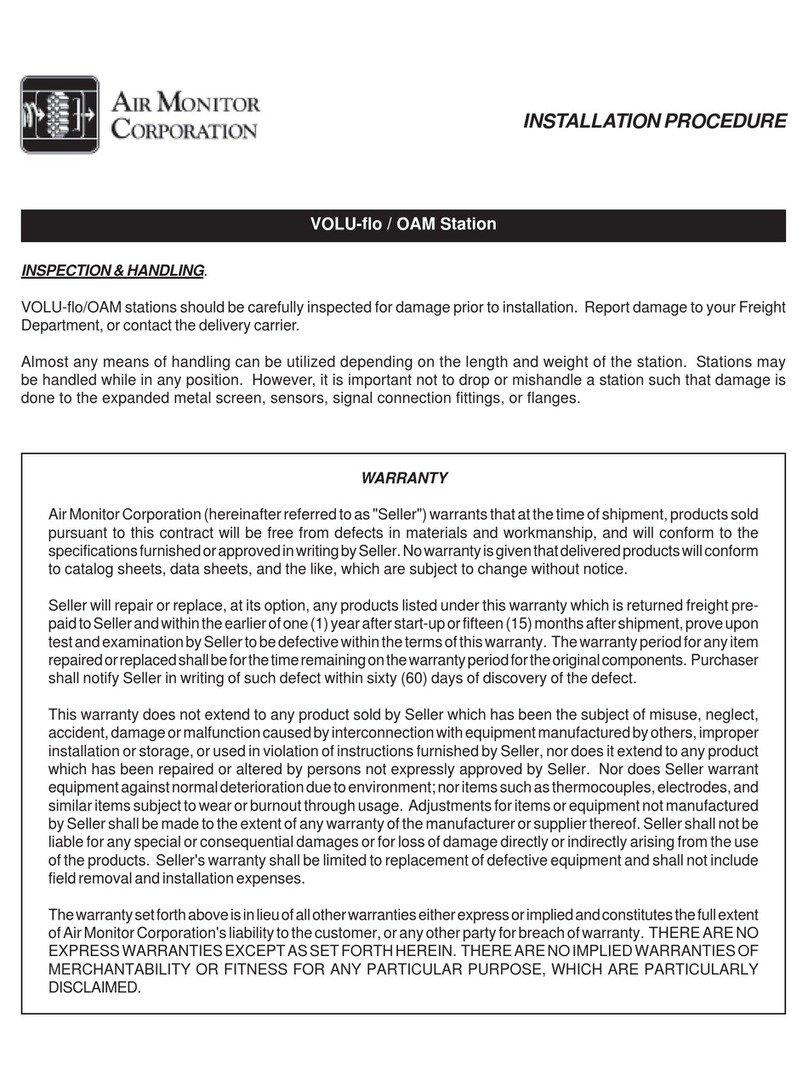
Air Monitor Corporation
Air Monitor Corporation VOLU-flo / OAM INSTALLATION PROCEDURE
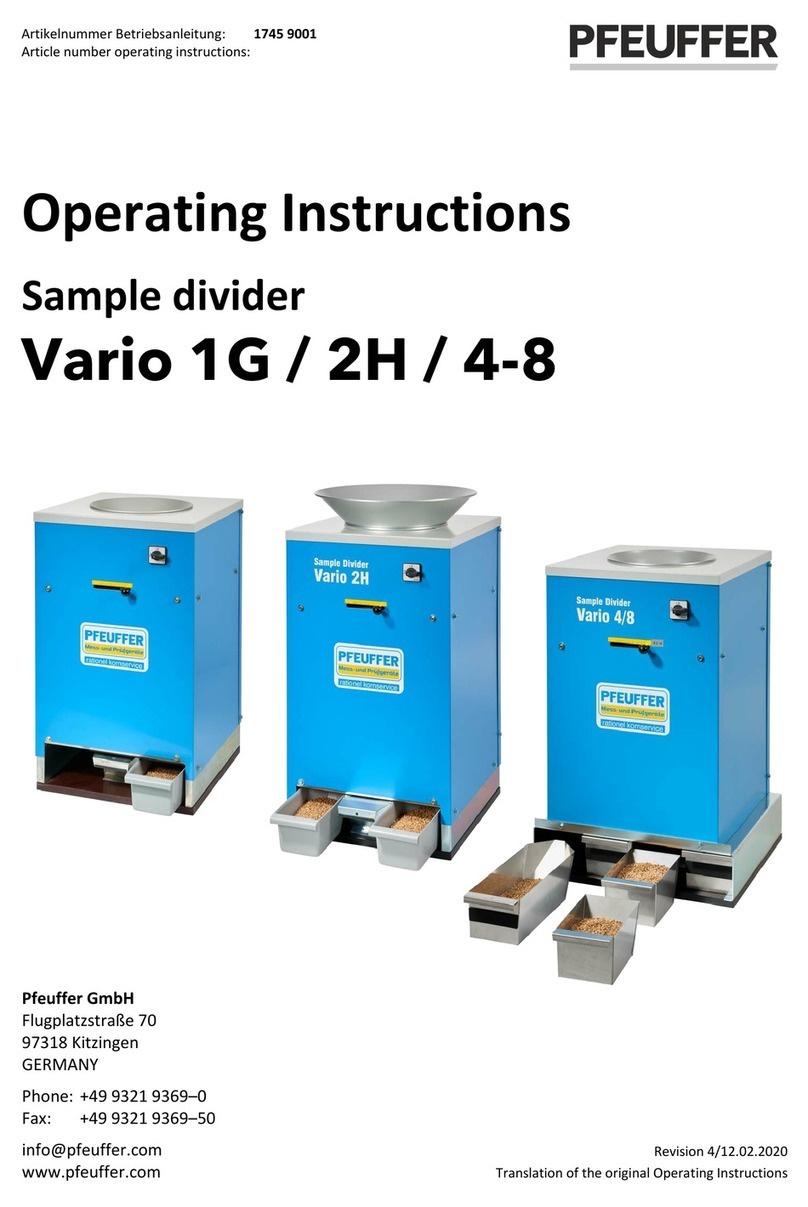
Pfeuffer
Pfeuffer Vario 1G operating instructions

Thermo Scientific
Thermo Scientific Orion Star A111 reference guide

horiba
horiba LAQUA-PC1100 instruction manual
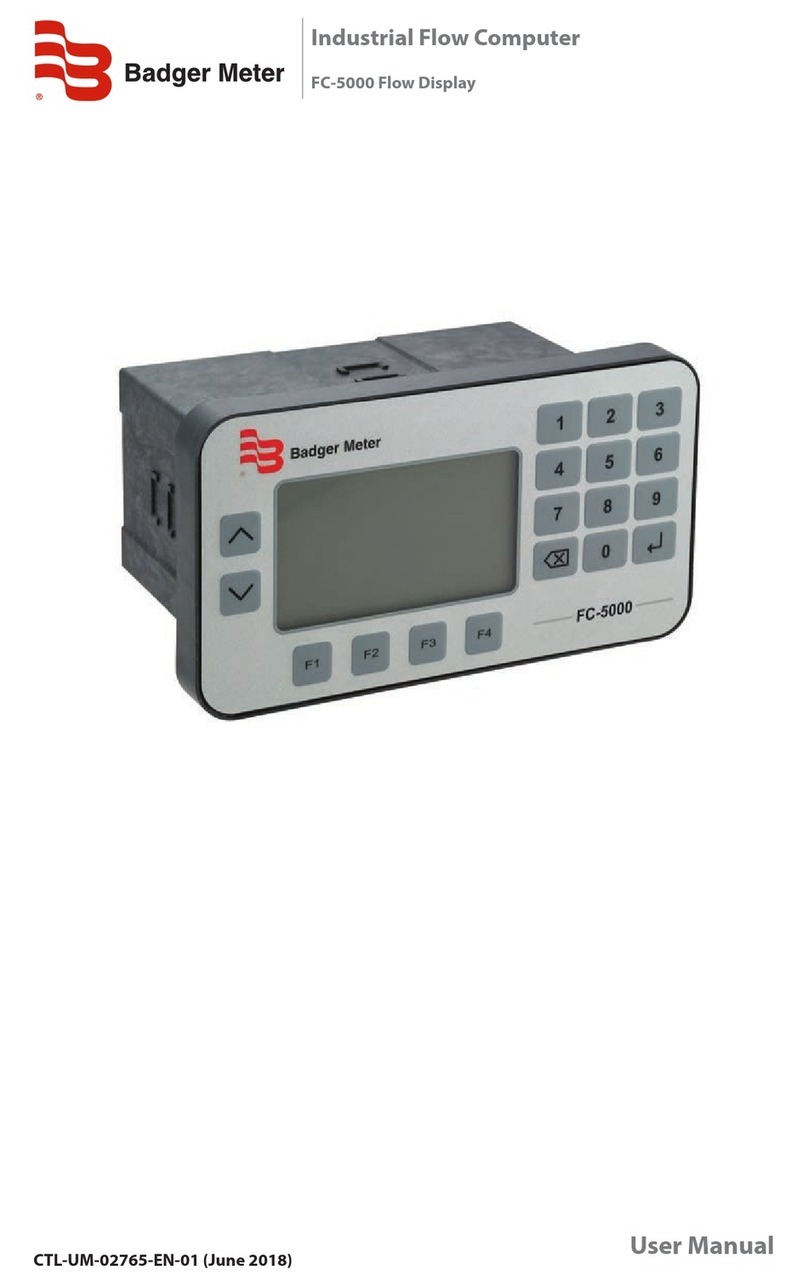
Badger Meter
Badger Meter FC-5000 user manual

EyeQue
EyeQue VisionCheck EQ102 product manual

ATEQ
ATEQ D670 quick start guide
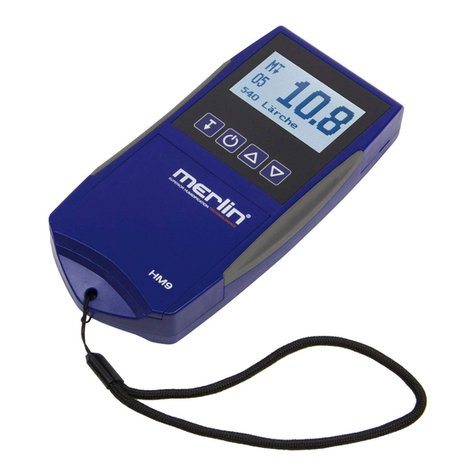
Merlin
Merlin HM9 Series instruction manual
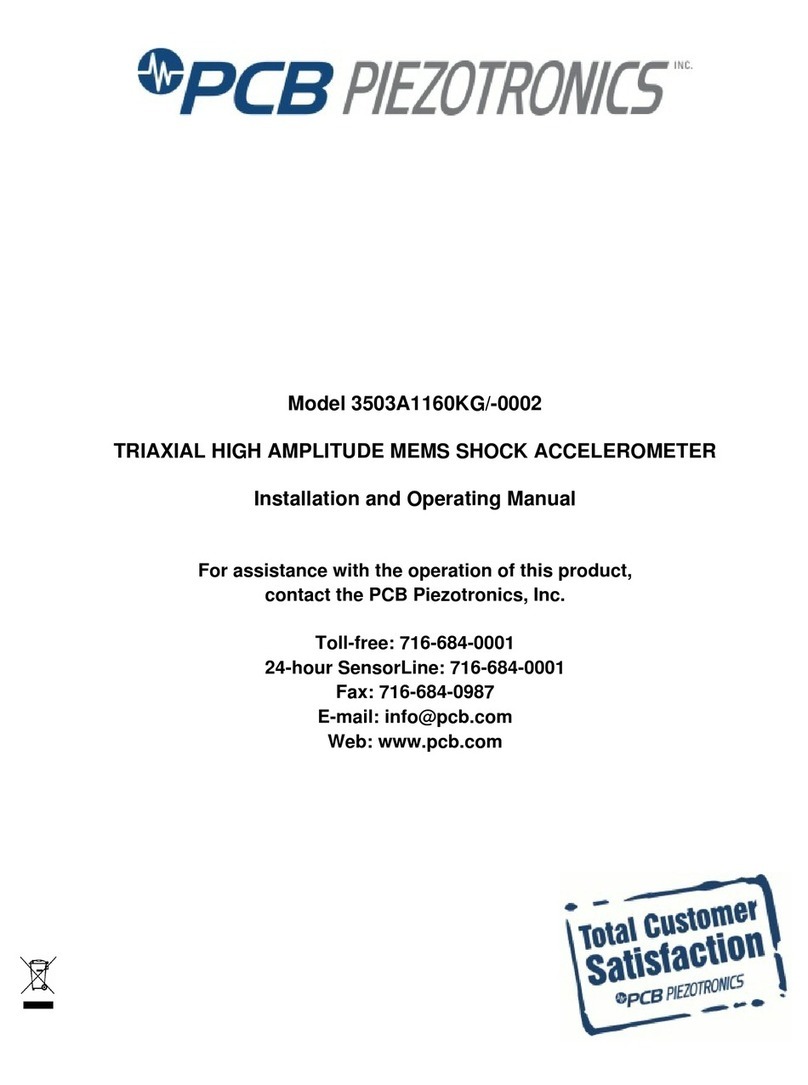
PCB Piezotronics
PCB Piezotronics 3503A1160KG/-0002 Installation and operating manual
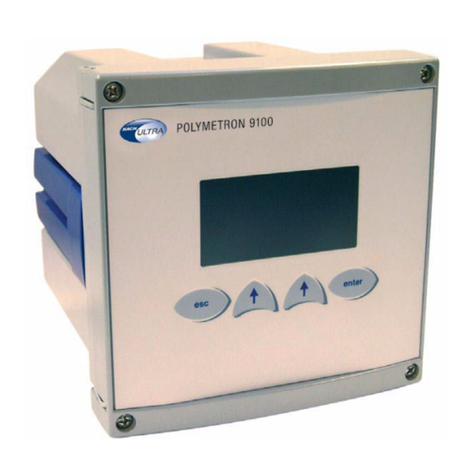
Hach
Hach POLYMETRON 9135 Operator's manual
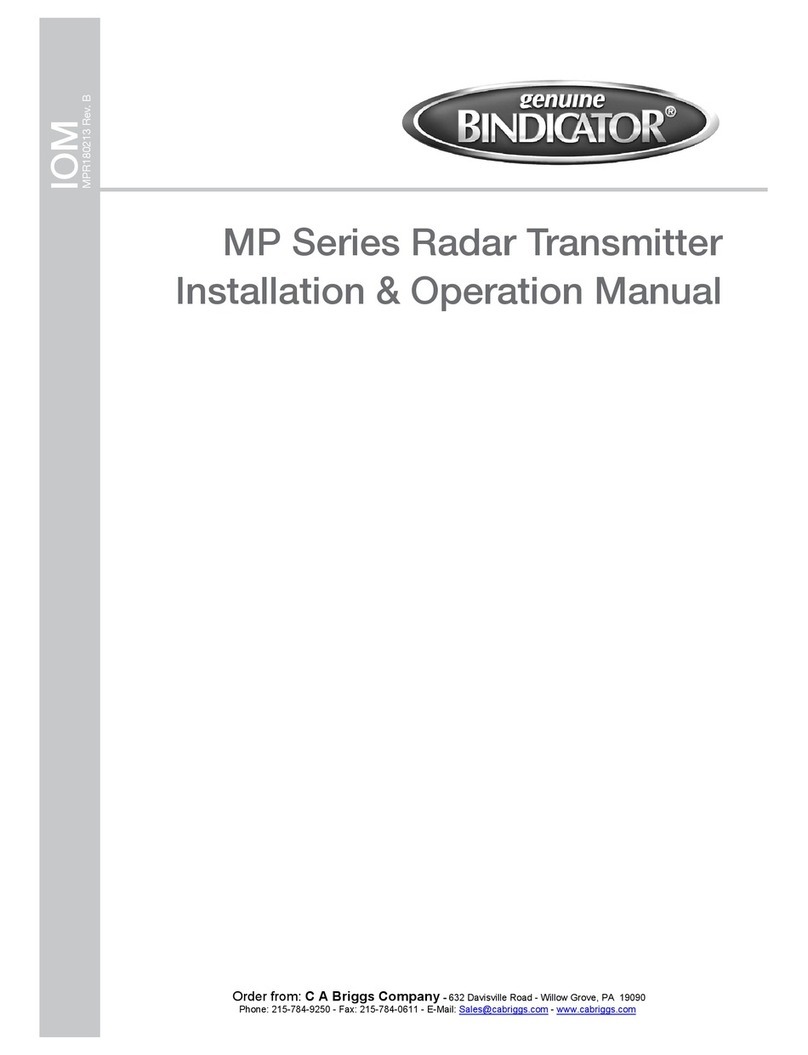
Bindicator
Bindicator MP Series Installation & operation manual
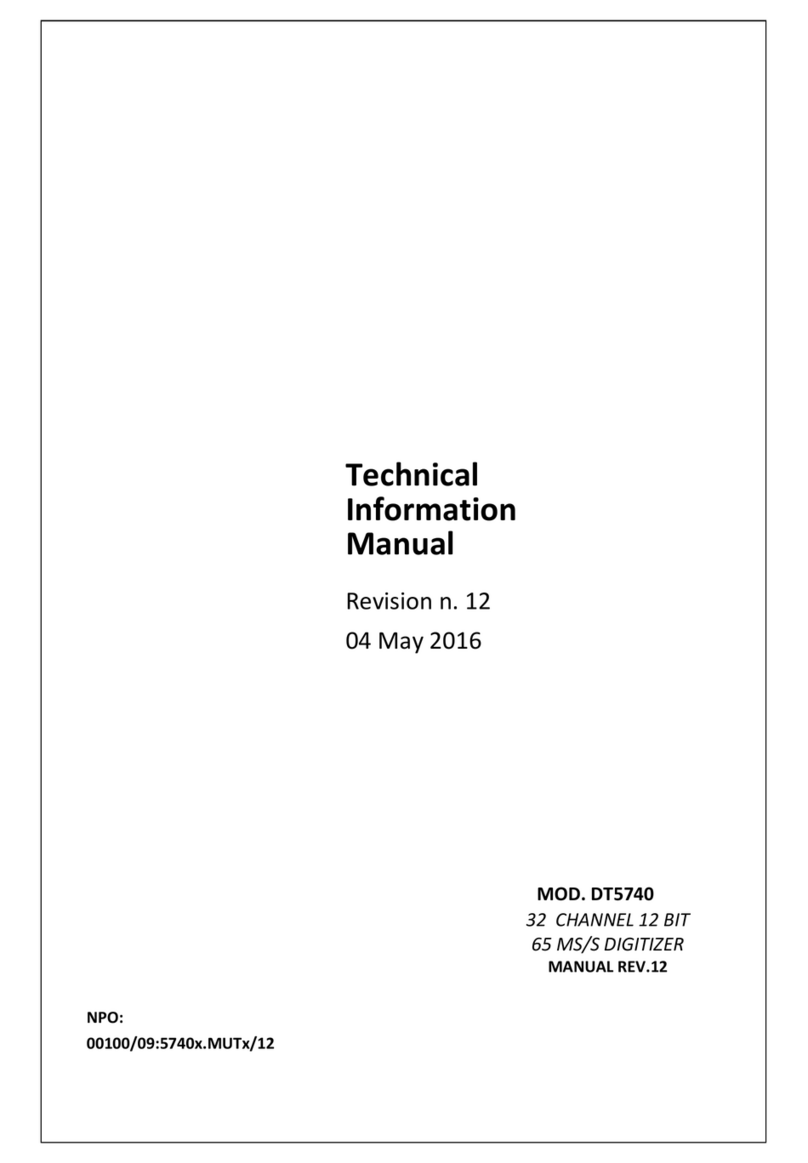
Caen
Caen DT5740 Technical information manual




